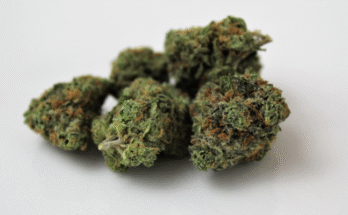In a world hooked on ultra-processed oils and sugar, it’s easy to forget that our bodies evolved on something much simpler.
And far more nourishing.
Animal fats like butter, tallow, ghee, and lard were once staples in every kitchen. Today, they’re often replaced by industrial seed oils (think: sunflower, soybean, canola, margarine).
But this dietary shift hasn’t made us healthier. If anything, it may be disrupting a critical system in the body that governs mood, metabolism, immunity, and energy.
That system is called the endocannabinoid system (ECS). And natural fats are its fuel.
The ECS: Your Body’s Master Balancer
The ECS is a biological network found throughout the brain and body. It’s made up of:
- Endocannabinoids (chemical messengers like anandamide)
- Receptors (CB1 and CB2)
- Enzymes that make and break down these messengers
This system helps regulate:
- Mood and stress
- Inflammation and immune response
- Appetite and metabolism
- Sleep and pain perception
- Reproductive and hormonal health
The ECS doesn’t just respond to cannabis. It runs on lipid-based messengers your body makes naturally from fats.

Read: Endocannabinoid Tone: The Forgotten Foundation of Health
Why Natural Fats Matter
Endocannabinoids are made from fatty acids, particularly:
- Arachidonic acid (AA) – found in animal fats like butter, tallow, ghee, duck fat, and lard
- EPA & DHA – found in fatty fish, important for balancing the ECS and calming inflammation
A diet rich in traditional saturated and monounsaturated fats provides the building blocks to produce these compounds and modulate ECS tone in a balanced way.
What about seed oils?
Industrial seed oils (high in omega-6 linoleic acid) disrupt this balance. Excess linoleic acid:
- Drives overproduction of pro-inflammatory endocannabinoid derivatives
- May increases CB1 receptor density – which is associated with obesity, insulin resistance, and sluggish metabolism
- Competes with omega-3s and AA for incorporation into cell membranes and messenger molecules
Put simply: seed oils may disregulate the ECS, potentially pushing the body into a state of inflammation, metabolic dysfunction, and emotional instability.
Cannabis and Metabolism: A Clue in the ECS Puzzle
Here’s where things get really interesting.
Despite the stereotype of the “munchies,” cannabis users consistently have lower BMI, better insulin sensitivity, and lower rates of obesity than non-users.
👉 This paradox is explained by how cannabis affects the ECS.
Cannabis (especially THC) downregulates CB1 receptors over time. And since overactive CB1 signalling (from high omega-6 intake) promotes obesity, this downregulation may actually protect against it.
In other words, cannabis may counteract the metabolic damage caused by seed oils.
This fits with what we know:
- High dietary omega-6 = excess endocannabinoids = overactive CB1 = obesity + metabolic decline
- Cannabis = fewer CB1 receptors = better metabolic outcomes
This may also explain why cannabis users:
- Eat more calories yet gain less weight
- Show improved glucose metabolism and less visceral fat
- Are less likely to be insulin resistant

The Omega Balance: Why 6:3 Matters
Human health depends on maintaining a healthy balance between omega-6 and omega-3 fatty acids. Historically, this ratio was about 1:1 or 2:1. Today, in most Western diets, it’s more like 20:1.
This imbalance:
- Drives inflammation
- Disrupts endocannabinoid signaling
- Inhibits the calming effects of omega-3s
Emerging research even shows that breast milk high in omega-6 to omega-3 can induce metabolic dysfunction in infants—highlighting how early this imbalance takes hold.
Interestingly, hemp seed oil (a cannabis product) has an optimal 2:1 to 3:1 omega-6 to omega-3 ratio—another way cannabis may be metabolically protective.
Read: Cannabis Users Have Lower BMI And Lower Rates Of Obesity, But Why?
Fat, Mitochondria, and Cellular Energy
Your mitochondria (those tiny energy factories in your cells) rely on fat for fuel. When you eat nourishing animal fats:
- You provide stable energy with minimal blood sugar crashes
- You nourish mitochondrial membranes, especially with cholesterol and saturated fat
- You support the production of endocannabinoids that fine-tune mitochondrial function and reduce oxidative stress
Studies suggest that endocannabinoids influence mitochondrial activity, especially in neurons, by:
- Modulating energy output
- Regulating calcium levels
- Protecting against metabolic stress
Seed oils, by contrast, are unstable, inflammatory, and easily oxidised, which damages mitochondria and impairs their function over time.

Reclaiming the Fat That Feeds You
We were never meant to run on industrial oils.
Our ancestors consumed diets rich in animal fats, organ meats, and marine omega-3s – and they had robust, balanced endocannabinoid systems that supported healthy mood, fertility, immunity, and metabolism.
Today, we can return to this wisdom.
By embracing butter, tallow, ghee, and nourishing whole foods, we not only feed our ECS, but we help the body return to its natural, joyful equilibrium.
Read: Can Cannabis Help With Weight Loss?
Key Takeaways
- The endocannabinoid system is powered by fats – especially arachidonic acid, EPA, and DHA
- Animal fats may help maintain balanced ECS function, which supports metabolism, mood, and immune health
- Evidence suggests that diets excessively high in omega-6 seed oils may shift ECS signalling in a pro-inflammatory direction.
- Some researchers suggest cannabis and cannabinoids may counteract the metabolic damage caused by seed oils.
- Supporting the ECS with the right fats may improve energy, reduce inflammation, and help you feel naturally grounded
Disclaimer: This is not medical advice. While some of these claims are supported by early data or animal studies, human research is still catching up. This article shares compelling hypotheses based on available evidence, but more research is needed to confirm long-term effects.
Sources:
The Emerging Role of the Endocannabinoid System in Endocrine Regulation and Energy Balance
Endocannabinoids Measurement in Human Saliva as Potential Biomarker of Obesity
Theoretical Explanation for Reduced Body Mass Index and Obesity Rates in Cannabis Users
An Increase in the Omega-6/Omega-3 Fatty Acid Ratio Increases the Risk for Obesity
Join our newsletter to get more insights like this – plus updates on cannabis, mushrooms, and the cutting edge of metabolic health.
Together, we can help shape a new paradigm.




